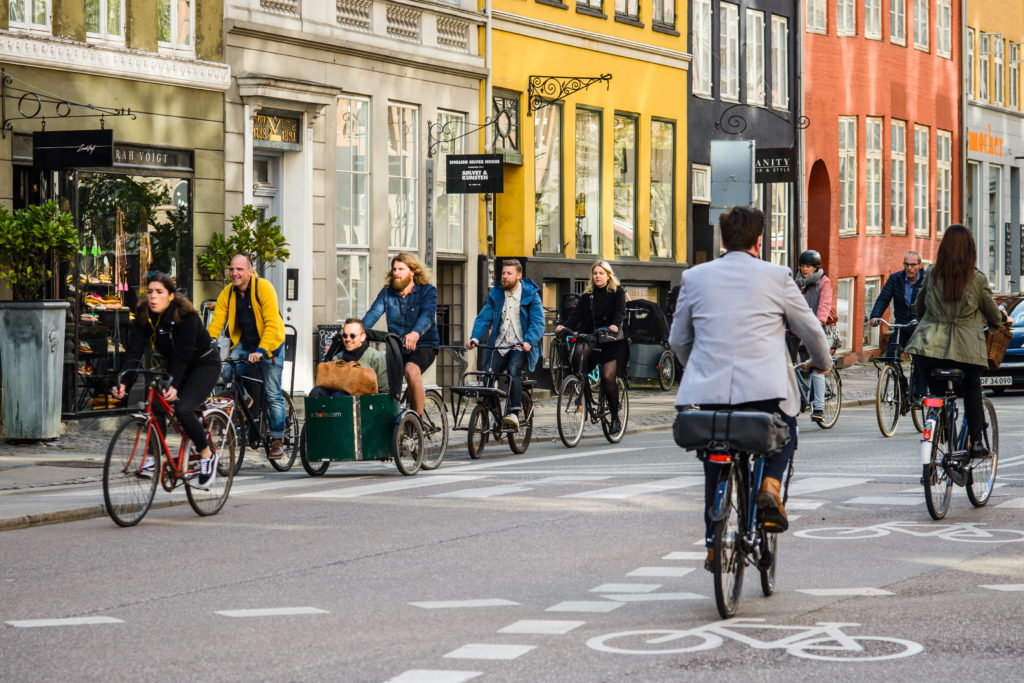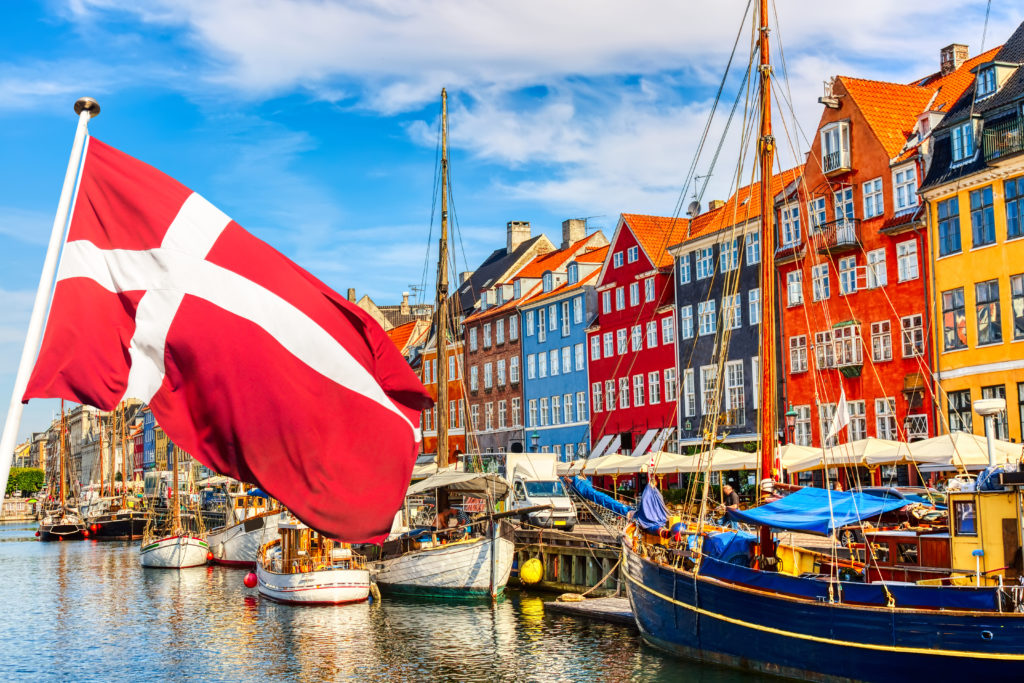Climate change in Denmark is a growing issue. The average temperature in Denmark has risen by about 1.5˚C over the past 150 years, and since the mid-twentieth century, the temperature has followed the trend expected by climate models up to the year 2100.
Climate Change in Copenhagen
Climate change is also being felt in Copenhagen, Denmark’s capital. The city has experienced an increase in average temperatures, more extreme weather events, and rising sea levels.
To adapt to these changes, the City of Copenhagen has developed a Climate Adaptation Plan. The plan includes measures such as planting more trees, green roofs, and creating more parks and open spaces. The city is also working to improve its drainage and sewer systems to cope with more heavy rainfall.
Rising Temperatures in Denmark
Climate change is evident in other ways in Denmark. For example, snow cover has diminished and spring comes earlier than it did a hundred years ago. There has been an increase in heavy rainfall events and more frequent coastal flooding due to rising sea levels.
Climate Change in Denmark
Impacts of climate change are already being felt in Denmark. For example, heat waves are becoming more common and more intense, causing problems for public health, agriculture, and energy systems. In addition, extreme weather events such as floods and storms are causing damage to infrastructure and property.
Denmark’s Carbon Footprint
Denmark’s carbon footprint is one of the largest in the world, largely due to its high consumption of fossil fuels. In order to meet its international commitments to reduce greenhouse gas emissions, Denmark has introduced a number of policies and measures to promote energy efficiency and renewable energy.
The average citizen has a carbon footprint of about 8.5 metric tons per year, which is among the highest in the world. The Danish government has set a goal of reducing this to 1.5 metric tons by 2050.

Greenhouse Gas Emissions in Denmark
Greenhouse gas emissions in Denmark have been increasing since 1990. In 2013, emissions from energy use accounted for about 84% of Denmark’s total greenhouse gas emissions. The majority of these emissions come from the burning of fossil fuels such as coal, oil, and natural gas.
Floods in Denmark
Denmark is increasing prone to flooding. In the past, most floods in Denmark have been caused by river catchments overflowing. However, due to climate change, coastal flooding is becoming more common. This is because rising sea levels are causing higher water levels in rivers and the ocean, which results in more frequent and severe flooding.
In recent years, there have been a number of floods in Denmark. In 2017, Denmark experienced its worst floods in 50 years. More than 20,000 homes were flooded and damage to infrastructure and property was estimated at more than €1 billion.
In 2018, there was another major flood in Denmark. This time, the floodwaters reached up to 4 meters in some areas. More than 2,000 homes were flooded and damage was estimated at €700 million.
Severe Storms
Floods are not the only extreme weather event that is becoming more common in Denmark. Storms are also becoming more frequent and more intense, due to climate change.
In October 2019, Denmark was hit by a severe storm. The storm caused damage to homes, roads, and railways. More than 100,000 homes were without power and damage was estimated at €700 million.
In January 2020, another severe storm hit Denmark. This time, the storm caused even more damage, with an estimated cost of €1.5 billion. As climate change continues, it is likely that Denmark will experience more extreme weather events, which will cause further damage to infrastructure and property.
Rising Sea Levels in Denmark

Climate change is causing sea levels to rise around the world. In Denmark, sea levels have risen by about 20 cm over the past 100 years. This may not seem like much, but it is enough to cause problems for coastal areas.
As sea levels continue to rise, Denmark will experience more frequent and more severe coastal flooding. In addition, the risk of flooding from rivers and the ocean will increase.
Carbon Credits
Carbon offsets or carbon credits are a way to offset your carbon footprint. They are credits given to businesses and individuals who reduce their carbon emissions. For example, you can buy carbon credits to offset the emissions from your flight.
Carbon credits can also be used to finance projects that reduce greenhouse gas emissions. For example, a project to install solar panels or wind turbines would create carbon credits that could be sold to offset the emissions of other businesses or individuals.
Carbon Offset Schemes
Denmark has a number of carbon offsetting schemes, including the Carbon Neutrality Fund and the Copenhagen Climate Accord. The Carbon Neutrality Fund was established in 2007 and is used to finance projects that reduce greenhouse gas emissions. The fund is financed by a carbon tax, which is levied on businesses and individuals. The Copenhagen Climate Accord is a voluntary agreement between the Danish government and business leaders to reduce greenhouse gas emissions.
Carbon Tax in Denmark
Denmark introduced a carbon tax in 1992. The tax is levied on the carbon content of fossil fuels. The tax is designed to discourage the use of fossil fuels and encourage the use of renewable energy.
The carbon tax is one of the most effective tools that Denmark has to reduce its greenhouse gas emissions. The tax has been successful in reducing emissions, and it has also raised revenue for the government. In 2018, the carbon tax was increased from DKK 30 to DKK 40 per tonne of CO2. The tax is expected to generate DKK 3 billion in revenue in 2019.
Wildlife in Denmark
Climate change is also affecting the country’s wildlife. For example, some bird species are declining in numbers due to changes in their habitats. In addition, warmer temperatures are causing problems for fish and other aquatic creatures. It is likely that wildlife species will be affected, having a negative impact on the country’s ecosystems and the economy.
Renewable Energy
Despite the challenges posed by climate change, Denmark is a world leader in renewable energy. More than half of the country’s electricity comes from renewable sources, such as wind and solar power. In addition, Denmark has set a goal to be completely fossil fuel free by 2050. To achieve this, the country is investing heavily in renewable energy technologies.
The primary forms of renewable energy in Denmark are wind power and solar power. Denmark is a world leader in both of these technologies. In fact, Denmark was the first country to develop commercial wind energy. Today, wind energy provides more than 20% of the country’s electricity.
Solar power is also playing an increasingly important role in Denmark’s energy mix. The country has a number of large solar farms, and solar panels are increasingly common on homes and businesses. In addition, Denmark is investing in new technologies, such as solar cells that can generate electricity from raindrops.

